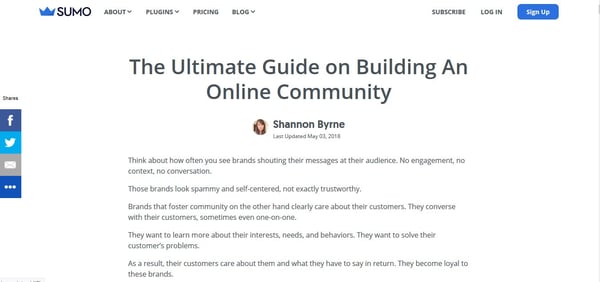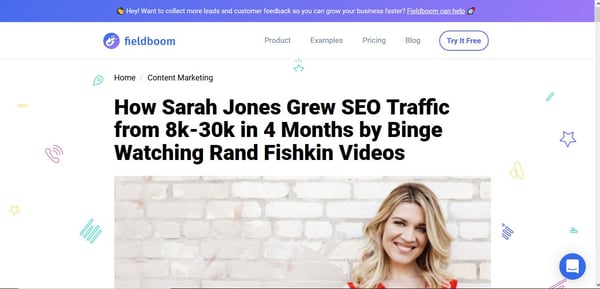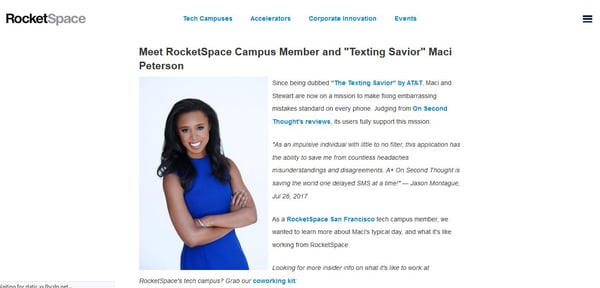There is no doubt about it — blogging still works.
It's how we drive massive amounts of organic search traffic to our website every month.
Unfortunately, many businesses give up on blogging before giving it a fair chance. The most common reason for abandoned company blogs? Lack of editorial direction.
If SEO isn't a significant part of your marketing strategy, by all means, create content on the fly. Those spontaneous shower thoughts sometimes turn into the best posts! However, if you're serious about doubling or tripling organic traffic over the next year, you absolutely need to create an editorial calendar.
Otherwise, you'll waste precious time staring at a blank page, wondering what the heck you should be writing about. At Lean Labs, we plan our blog content quarterly. Not only does this ensure we publish on a regular schedule, but it also allows us to group posts around topical themes, timely events, and special promotions. How do we generate a hefty list of blog content ideas in one sitting?
We conduct keyword research, choose our terms, and match them with predetermined article formats. In this article, we'll reveal the six methods we most rely upon when outlining content ideas for our blog.
The Ultimate List of Blog Content Ideas

1. THE "TRIPLE 5 STRATEGY"
One of our favorite techniques to use when brainstorming content is “The Triple 5 Strategy.” It's simple, quick, and effective. Here's how you do it:
- List five topics your blog should cover: At Lean Labs, we're primarily focused on inbound marketing, growth-driven design, and HubSpot. We might also add video marketing (since it's something we're trying to get better at) and lead generation (since it's a frequently searched term related to what we do) to our list.
- List five subtopics within each subject: Next, imagine that one of your topics is the overarching subject matter of your blog. What are five categories that would fit underneath that umbrella? If inbound marketing was our primary topic, we might group it with the following subtopics: Buyer personas, automated marketing software, buyer's journey, content writing, and organic traffic.
- Write five article titles for each subtopic: Finally, pretend you subtopic is the overarching subject matter of your blog. Brainstorm five articles ideas for each one. When you're going for volume, the key is to generate super specific titles. For example, you could write about "how to start a business Youtube channel." However, you could also write about "how to choose the best thumbnails on YouTube" or "X types of video marketing strategies seen on YouTube."
Follow the aforementioned steps for each primary topic, and you will end up with five topics, 25 subtopics, and 125 article titles. The best way to complete this exercise is to not think too hard about it. If you're not in love with every single article idea at the end of it, that's OK. Move onto our next technique...
2. Be Helpful

One of the easiest ways to generate content ideas is to put yourself in the shoes of your customers. What do they want to learn how to do? What information are they actively seeking? What could you teach them that would make their lives easier or more enjoyable? Plug the answers to those questions, and your chosen keywords, into the following formats:
- List Articles: For some reason, people love lists! Create a list of resources, tools, or books for your target market. Here's an example of a list article we published at Lean Labs.
- Research Articles: Conduct your own primary research around a topic in your niche. This is one of the more time-consuming formats, but it's one of the best ways to become an industry leader and gain a huge following. Here's an example of a research post from CB Insights.
- FAQ Articles: Do you get repeat questions from customers? Create posts around those questions to free up your customer service reps for other tasks. Here's an example of an FAQ post.
3. Be Personable

One of the best ways to stand out is to tell stories. Whether they are based on events within your own life, or the life of someone your audience would find interesting, stories are a great way to build rapport with your audience.
- Inspirational Article: Some of the most effective content on the web is also the most honest. Inspirational articles outline what is possible and can be formatted as story posts, profile posts, or quote posts. Here's an example of an inspirational/profile post.
- Off-Topic Article: Off-topic posts are great for standing out, infusing fresh life into predictable blogrolls, and attracting fresh readership. The key to succeeding with an unusual topic is being genuinely interested in whatever you are writing about. If people like you, and what you have written about in the past, they will probably be interested in what you have to say. Here's an example of an off-topic article.
- Personal Experience: Some of the best articles are about real-life experiences. Have an exceptionally good customer service experience recently? How about an interesting conversation at the supermarket? If you can somehow relate that experience to your business, you should definitely write about it. Here's an example of a personal experience post.
4. Be Collaborative

Have you ever tried collaborating with another business, expert, or influencer to create content? Not only are collaborative posts easy to write (because you're just relaying spoken information), but they are also a fantastic way to quickly bring in fresh traffic. The only downside? They require reaching out to people you might not know well or at all. However, once you get over the fear of rejection, collaborative posts will probably become your favorite format.
- Interview Article: Would your audience be interested in hearing from a particular influencer? Reach out to that person and request a brief phone interview. Transcribe the material onto the blog and voila! Here's an example of an interview article.
- Crowdsourced Article: Pose a single question to several influencers via email. Ask for a response of 100 words or less. Publish the results and link to the influencers' websites. They may share the post with their own audiences, thus increasing traffic to your site. Here's an example of a crowdsourced article.
- People to Follow: Are there any industry leaders your audience would benefit from following? Would they like to know who the best influencers are related to their shared interests or goals? Create a post summarizing some thought leaders they may be interested in keeping tabs on. Here's an example of a people-to-follow article.
5. Be Promotional

Promotional-style articles work best for Middle-of-Funnel (MOFU) and Bottom-of-Funnel (BOFU) traffic. The people most interested in these articles have likely already decided to purchase something, but they are still on the fence in terms of providers. Conversely, they may already be loyal customers who are interested in maximizing what they got from you.
- Comparison Article: Compare the features and benefits of your product to competitive solutions. Be honest and include instances where your product or service may not be the best solution. Here's an example of a comparison article.
- Company Update: Experiencing a change in management? Updating a product with new features? Got some big company news your audience may be interested in hearing about? Tell them about it. Here's an example of a company update.
Fresh Blog Article Ideas
As you can see, creating a content calendar doesn't have to be hard. It's just a matter of knowing your brand, understanding your target audience, and identifying the article formats that work best for you.
We recommend sitting down once every 6 months to brainstorm a giant list of fresh topics. Also, consider flagging any titles you're not crazy about. You can always swap out the duds for better article ideas down the road.
Ashley is a content writer and brand developer. After graduating with a degree in print-journalism, Ashley’s storytelling skills took her from the bizarre world of on-camera acting to the practice courts of NBA basketball players to the virtual meetings of inbound marketers. Today she specializes in building memorable brand voices online, with a focus on the travel & tourism, e-commerce and tech industries.